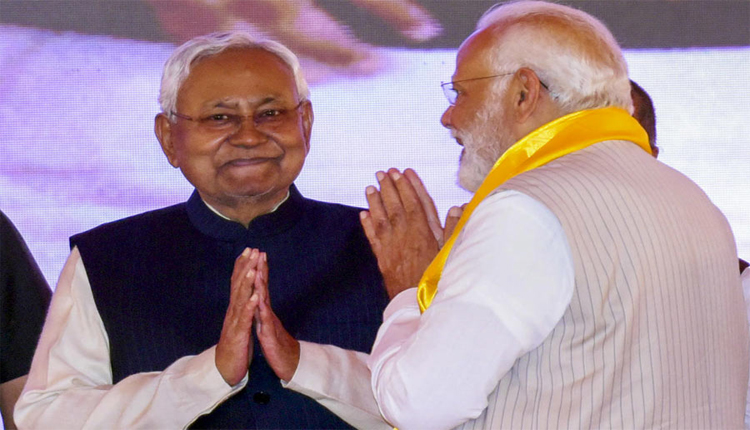Patna: As Bihar gears up for its high-stakes Assembly elections slated for October-November, the ruling National Democratic Alliance (NDA) is grappling with internal tensions over seat-sharing, with the Bharatiya Janata Party (BJP) and Janata Dal (United) locked in a fierce contest to assert dominance.
The tug-of-war, centered on who will emerge as the ‘big brother’ in the coalition, has intensified as both parties vie for at least one seat more than the other, setting the stage for a delicate balancing act within the alliance.
A Tight Seat-Sharing Race
The NDA, led by Chief Minister Nitish Kumar’s JD(U) and bolstered by the BJP, Lok Janshakti Party (Ram Vilas), Hindustani Awam Morcha (HAM), and Rashtriya Lok Morcha (RLM), is under pressure to finalise its seat-sharing formula for the 243-member Bihar Assembly. Recent reports indicate a near-consensus, with JD(U) likely to contest 102-103 seats and the BJP 101-102, a slight edge for Kumar’s party to maintain its senior partner status. The remaining 38-40 seats are expected to be divided among smaller allies, with Chirag Paswan’s LJP (Ram Vilas) pushing for up to 40 seats but likely settling for around 20, and HAM and RLM each eyeing 10 seats.
Learning From 2020
This allocation marks a shift from the 2020 elections, where JD(U) contested 115 seats but won only 43, while the BJP secured 74 out of 110. The disparity in strike rates fuelled perceptions of the BJP’s growing clout, a narrative Kumar’s party is keen to counter by referencing earlier election results where it outperformed its ally. The return of allies like Paswan and Upendra Kushwaha to the NDA fold has further complicated the equation, with each partner flexing its muscle to secure a larger share based on perceived voter support.
BJP’s Push, JD(U)’s Resolve
The BJP, buoyed by its recent successes in Haryana, Maharashtra, and Delhi, is pushing for an equal or greater share, banking on Prime Minister Narendra Modi’s popularity and better coordination among cadres. However, JD(U) insists on retaining its ‘elder brother’ status, arguing that the 2020 losses were partly due to LJP’s rebellion, which cost it over 30 seats by splitting votes. A senior NDA leader emphasised that the campaign will center on Kumar’s leadership, with “minor adjustments” to accommodate allies, signaling a strategic effort to project unity.
Smaller Allies In The Fray
Smaller allies are not sitting idle. Chirag Paswan, now a Union Minister, has hinted at contesting the polls to boost his party’s influence, while HAM’s Jitan Ram Manjhi has downplayed disputes, stating the alliance will follow directives from the top. Yet, sources suggest Paswan’s demand for 40 seats is seen as excessive by the BJP, which considers 20 a “realistic figure.”
Opposition Eyes Opportunity
The Opposition Mahagathbandhan, led by the Rashtriya Janata Dal and Congress, is watching closely, intensifying its campaign with initiatives like the “Voter Adhikar Yatra” to capitalise on any NDA fissures. As negotiations shift to Delhi for final approvals, the NDA’s ability to present a united front will be critical in a state where caste equations and local influence often dictate electoral outcomes. As of now, Bihar’s political cauldron is simmering, with the BJP-JD(U) rivalry threatening to reshape the NDA’s fortunes.



Comments are closed.